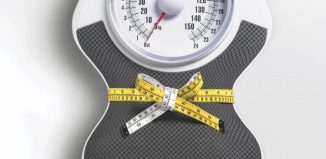A holistic approach to health
Whether or not we want to live to be a centenarian, most of us want to live the healthiest life possible with the fewest chronic diseases, medications, and impediments to daily life.
While exercise is one component of lifestyle modification, diet is an essential part, as well. The most surprising result, at least to me, is that it is unclear how much sodium we should consume. But before you start putting salt on your food, know that the research agrees about too much sodium being dangerous. What that number is, however, varies. What we do know is that the average sodium intake in the U.S. is 3.4 grams (1). This is greater than recommendations from the American Heart Association, which has the strictest guideline of <1,500 mg daily for most Americans; however, the Dietary Guidelines Advisory Committee (DGAC) 2015 recommends <2,400 mg per day (2). The consensus is that we consume too much sodium, period!
Did you get question 3 on the quiz correct? Well, microwaving, contrary to prevailing thought, is not necessarily the enemy. It depends on which compounds in the foods we are testing.
It is most important to realize that healthy eating is not about individual nutrients, but rather about diet as a whole. DGAC emphasizes the importance of a nutrient-rich diet with a focus on fruits, vegetables, nuts, seeds, whole grains, fish and low or nonfat dairy. In addition, it recommends minimal red meat, especially processed meats, and minimal processed sugars and refined grains (3).
Let’s look at the evidence.
IS SODIUM THE VILLIAN?
Of course not! We all need sodium. However, some in the medical community would argue that “moderate” amounts of between 3 and 6 grams a day are okay. I am specifically referencing an article written by Dr. Aaron Carroll in the New York Times, “Simple Rules for Healthy Eating.” It was one of the most popular articles recently. While he does have good suggestions, with a disclaimer that these are only his opinions, I disagree with his third point regarding salts and fats. He believes that salt can be used in “moderation”; seasoning your food with it is fine.
In the article, he references a large observational study, the PURE study. Its results suggest that a high urinary excretion of sodium, >7 grams per day, correlated with an increased risk of all-cause mortality compared to 4 to 5.99 grams per day (4). But surprisingly, those who had a urinary excretion of <3 grams per day of sodium also had an increased risk of all-cause mortality. This study had over 100,000 participants, but there were significant weaknesses. For one, the researchers estimated the 24-hour sodium urine excretion because they only had one snapshot sample. Also, there was only one urine sample taken during the study, so it is not clear whether the participants increased or decreased their sodium excretion during the study.
Finally, urinary excretion of sodium does not necessarily correlate with sodium intake (5). It is considered a standard measurement, but it is still an indirect marker.
In another article, “Behind the Dietary Guidelines, Better Science,” Dr. Carroll argues that low sodium could potentially be dangerous. Here, he uses a study with heart failure patients (6). The results show that those heart failure patients who were in the lowest sodium intake group had more hospitalizations than those in the modest sodium intake group. However, those in the lowest group also had hyponatremia (reduction in blood levels of sodium) due to significantly reduced sodium intake. This most likely is the major contributor to the hospitalizations. On the surface, it looks like a good study, but once you analyze the data, it is not.
In fact, there are studies showing that lowering sodium has significantly positive effects. In one, lowering the sodium in pre-hypertension patients reduced the risk of cardiovascular events, including heart attacks, strokes and cardiovascular death, by 30 percent (7).
FATS
In “Simple Rules for Healthy Eating,” Dr. Carroll also writes about fats, claiming that butter should be used as needed. However, the study he uses to substantiate this concerns replacing butter with high amounts of carbohydrates or other potentially unhealthy fats, such as omega-6 fatty acids only, not foods that contain good fats such as omega-3s (8). This is a flawed comparison since the substitutes are no better than saturated fats.
EXERCISE
Though some of us would like it to be true that exercise allows us to eat with impunity, it is a myth. In a recent editorial, the author mentions that obesity and disease are caused more by poor diet and that exercise, while substantial to overall health, cannot overcome this effect (9). The author goes on to say that the type of calorie is important; 150 calories of sugar increase the risk of type 2 diabetes by 11 times more than 150 calories of fats or protein. Even more horrifying is that 4 in 10 normal-weight individuals will be afflicted by high cholesterol, high blood pressure, cardiovascular disease and nonalcoholic fatty liver disease. Just because you are thin does not mean you’re healthy or “fit.” Poor diet has more negative effects than smoking, sedentary behavior and drinking combined. Thus, exercise alone may not be able to compensate for unhealthy diet.
MICROWAVE
The theory has been that microwaves destroy valuable nutrients. However, is that always the case for vegetable-rich, plant-based foods? According to the Harvard Health Letter of Jan. 2, 2015, cooking vegetables for a shorter amount of time with less water helps them retain their phytochemical nutrients better. Microwaving fits this parameter. In a study testing this theory with cruciferous vegetables, results showed that microwaved foods retain a significant amount of glucosinolates (nutrients), holding their own when compared to boiling and steaming (10). However, each method lost a substantial amount of vitamin C. There are a number of critics of microwaves though. Who is right? We cannot be sure, but food content is more critical than the type of cooking preparation, with some exceptions.
The bottom line is that we should focus on a vegetable-rich, plant-based diet with proportions that vary based on an individual’s goals and health status. The extremes should be avoided. We don’t want extreme exercise or extremes in different nutrients such as fats, protein and carbohydrates. In fact, low sugar is not good either; fruits contain plenty of sugars. We should not aim to eliminate a nutrient from our diet. Preparation of these foods in terms of cooking techniques is less important, except, of course, for charring animal protein and deep frying.
REFERENCES
(1) CDC.gov. (2) Heart.org; health.gov. (3) health.gov. (4) N Engl J Med 2014;371:612-623. (5) Hypertension 1980;2:695-699. (6) Clin Sci 2008;114:221-230. (7) BMJ 2007;334(7599):885. (8) Open Heart 2014;1(1):e000032. (9) Br J Sports Med online April 22, 2015. (10) J Agric Food Chem 2010;58(7),4310-4321.
Dr. Dunaief is a speaker, author and local lifestyle medicine physician focusing on the integration of medicine, nutrition, fitness and stress management. For further information, go to the website www.medicalcompassmd.com and/or consult your personal physician.






